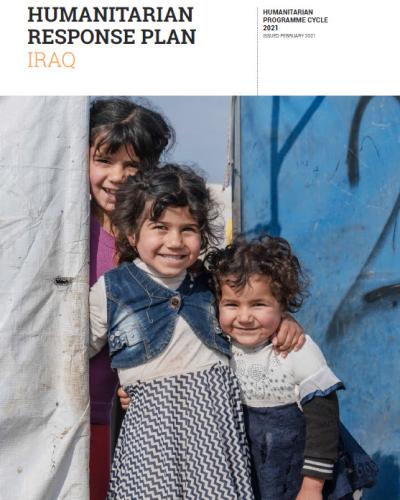Humanitarian Response Plan

Foreword
The humanitarian context facing Iraq in 2021 has significantly changed from recent years. While humanitarian needs in Iraq continue to be primarily driven by the effects of conflict and displacement, COVID-19 presented an additional shock in 2020. The impact of COVID-19—particularly the economic downturn caused by the deteriorating oil prices—have resulted in loss of livelihoods, while at the same time, the restriction in movements have disrupted access to services and increased protection and gender-based violence (GBV) risks. These conditions had a significant socio-economic impact on the Iraqi population as a whole and have increased humanitarian needs especially among conflict-affected populations, particularly in out-of-camp and return locations. In addition, the sudden closure of 14 camps for internally displaced persons (IDPs) in the second half of the year have created disruption of services and have necessitated radical shifts in operations for humanitarian actors.
Considering these unexpected changes, humanitarian actors in Iraq will in 2021 no longer primarily focus on servicing the needs of IDPs living in camps. The response in 2021 will concentrate on the needs of 1.5 million vulnerable IDPs and returnees, the majority of whom are in out-of-camp locations. The needs of these populations can be less visible, but are often more acute with more severe implications, which are harder to address. Therefore, the assessments carried out by humanitarian actors will need to adapt to better evaluate the needs of returnees and out-of-camp IDPs, including those who live in informal settlements.
Organizations will need to scale-up in areas with previously limited partner presence, requiring improvements in access to previously hard-to-reach locations.
While the focus of our work is shifting, the substantive needs remain much the same. Iraqis seek the repair and reconstruction of war-damaged homes; the clearance of explosive ordnance; social cohesion programming; enforcement of housing, land and property rights; improvements to the security situation; creation of employment and livelihoods opportunities; restoration of basic services; improvements in access to quality health care and education; and speeding up of the reconciliation process. All these challenges are substantial and will require all members of the international community to collaborate and complement each other’s work.
Such collaboration and outreach to stabilization and development partners will be crucial, as the challenges for out-of-camp IDPs and returnees cannot be addressed by humanitarians alone. Achieving durable solutions for Iraq’s IDPs, returnees and vulnerable host communities will require the combined support of humanitarian, stabilization and development actors.
Ending protracted displacement will also require sustained engagement of and with government counterparts, at the national, regional and local levels.
The 2021 Humanitarian Response Plan outlines the humanitarian community’s detailed plans for the year ahead based on an evidence-based analysis of the needs of IDPs and their communities, and presents the financial requirements needed to achieve its aims. As Humanitarian Coordinator, it is my honor to oversee the work of humanitarian partners as we continue our efforts to serve Iraq’s most vulnerable Internally Displaced Persons.









